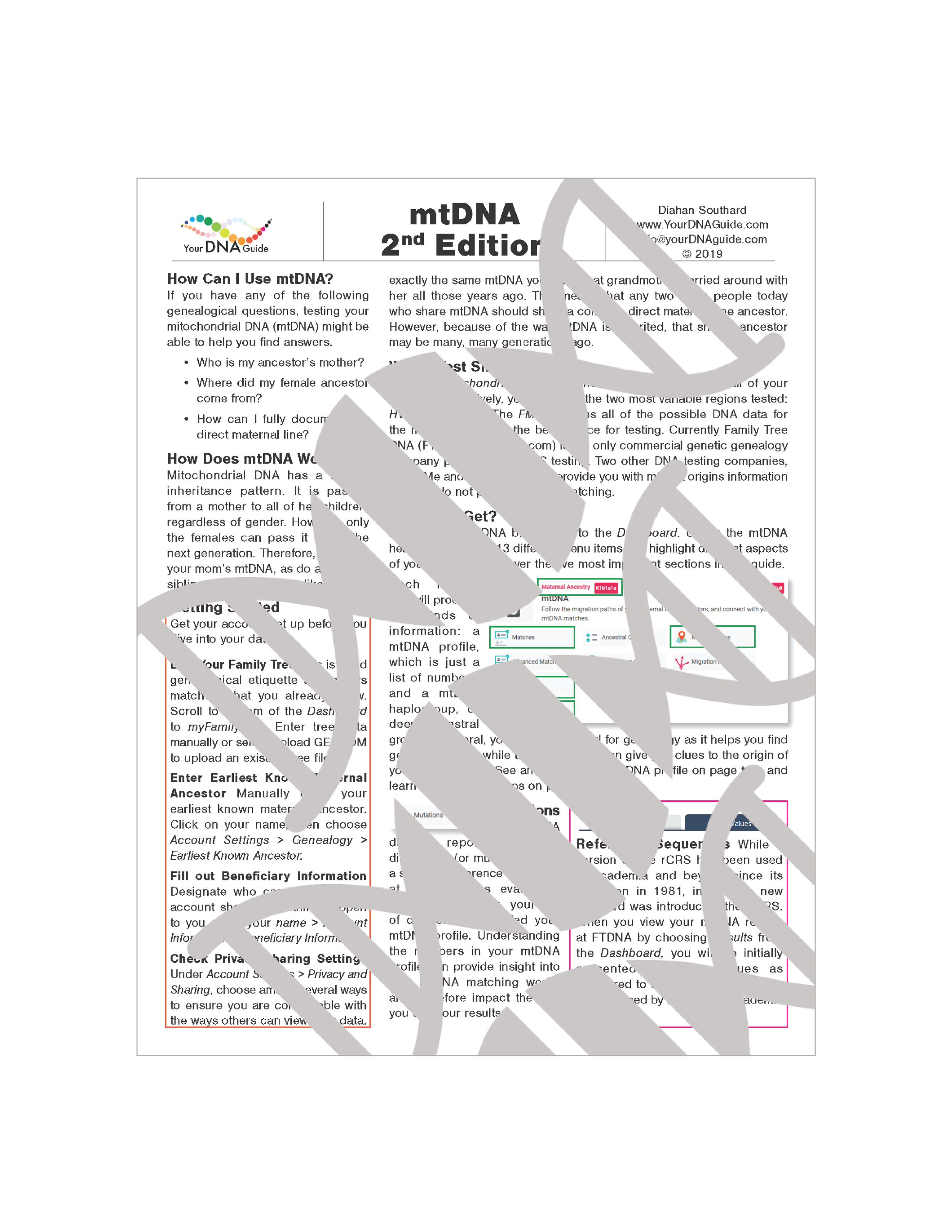Your mtDNA results are reported differently by different DNA testing companies. Why? Which results are better?
 As you may already know, mtDNA testing provides genetic information specific to your maternal line: your mother’s mother’s mother’s mother, etc. This can be a tempting line of testing to take, since a lot of people have mysteries on their maternal lines. (Why? Well, women’s surnames may have changed with each generation, and old records often didn’t fully identify women.)
As you may already know, mtDNA testing provides genetic information specific to your maternal line: your mother’s mother’s mother’s mother, etc. This can be a tempting line of testing to take, since a lot of people have mysteries on their maternal lines. (Why? Well, women’s surnames may have changed with each generation, and old records often didn’t fully identify women.)
When you get mtDNA results from Living DNA or 23andMe, they look different than the full-sequence mtDNA test results you get from FamilyTreeDNA. Here’s why.
mtDNA from 23andMe or Living DNA
When you take an autosomal test at 23andMe or Living DNA, you’ll get an mtDNA haplogroup result. It links you to an ancient ancestral place of origin for your direct maternal line.
Your haplogroup is named with a series of alternating numbers and letters. It looks something like this:
K1a
You can learn from these two letters and a number that your foremothers originated in West Asia between 20,000 and 38,000 years ago. They were among early Neolithic farmers of the Near East and later appeared among early European farmers, as well.
This is a good start, especially considering that you got this little peek at your deep maternal origins from an autosomal test that’s not designed to look specifically at your motherline. They only capture a little bit of mtDNA data from the few of the 16,000 letters in your mitochondrial DNA. But it’s enough to provide you with this high-level mtDNA haplogroup assignment.
Full-sequence mtDNA test results
Then let’s say you take the full-sequence mtDNA test from FamilyTreeDNA*. This test determines the exact order of those 16,000 letters and thus you get a much longer, more specific result for your maternal haplogroup:
K1a3a3
The first three letters of this assignment should look familiar: K1a. That’s the part that the autosomal tests captured already. But the new alphanumeric sequence you’re seeing is more detailed. It tells you that your deep maternal lineage comes out of the region of Hungary. This more-specific information can help you create a deeper sense of emotional connection to this ancestral place. Your full-sequence mtDNA test will also provide you with DNA matches specific to your maternal line. (You won’t be able to tell how closely they are related to you, just that you share a deep maternal-line origin.)
So that’s why your mtDNA results from your autosomal tests at Living DNA or 23andMe look so different than the full-sequence mtDNA results you can purchase from FamilyTreeDNA. Those first two aren’t wrong: they’re just less-specific.
Master your mtDNA
With my mtDNA quick reference guide you will be a mtDNA master in no time. The handy all-you-need-to-know-and-nothing-more guide is available as a digital download.
This article contains affiliate links. If you click on an affiliate link and make a purchase, Your DNA Guide will receive a small payment, which does not affect the price you pay but which does help Your DNA Guide continue to bring you great articles like these!


